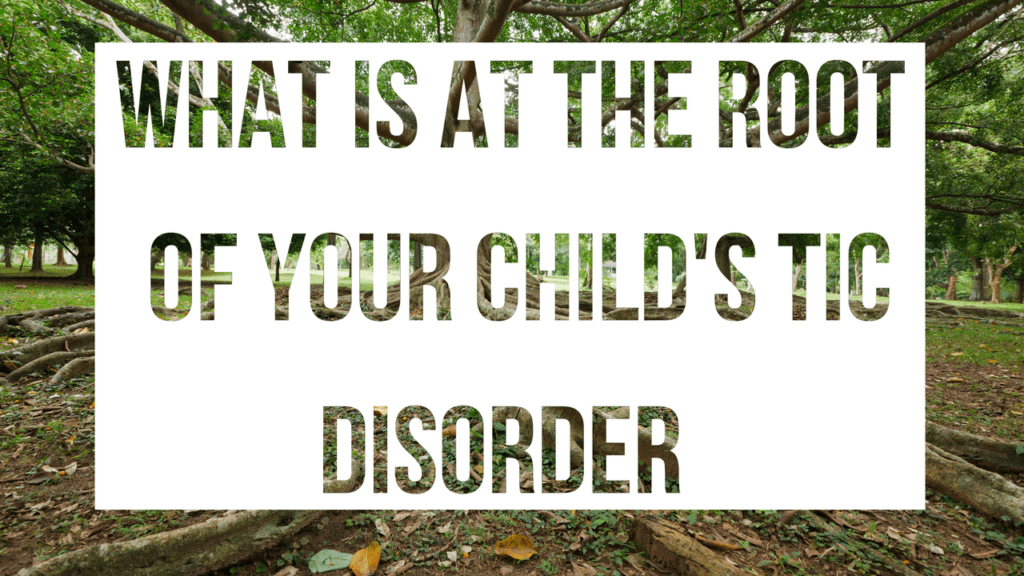I bet your doctor has never told you this before…
Chronic inflammation is the primary driver of chronic disease and the underlying cause of chronic illnesses. So if your child has a tic disorder, it’s time to explore where that inflammation is coming from.
Am I right? That’s what I thought, and honestly, only one of our eight doctors has ever talked to us about inflammation.
Plus, I am sure you have wondered “how do you get rid of a tic?”
Before we dive in, you have to understand that inflammation is not just inflammation; inflammation comes in different forms, both necessary for health and harmful if it’s chronic inflammation.
Inflammation is an integral part of your immune response and the first line of defense for your body against harmful stimuli like germs and toxins.
But inflammation, as with all things in life, is not black or white; Inflammation can be necessary but also harmful, which means that a specific type of inflammation has to be dealt with accordingly (more on inflammation later).
When you get sick or twist your ankle, your immune system goes to work; Inflammation is a good thing. For example, you have a fever or redness and swelling for a few days, but after a few days, you feel better. This inflammation is a particular type of inflammation called acute inflammation.
Acute inflammation saves lives when it fights off an infection or injury, but inflammation becomes the real problem if you live in this state chronically throughout your life. This chronic inflammation, also known as systemic inflammation, is caused by chronic stress, food sensitivities/intolerances/sensitivity to chemicals, imbalance in the microbiome (good bacteria-bad bacteria ratio), toxicity, and environmental factors. When we are exposed to certain triggers, the body produces small proteins called cytokines. These cytokines facilitate the response of the body to threats. Cytokines can be measured and used to assess inflammation levels in the body. (Chang et al., 2010)
It is evident from looking at study after study that chronic inflammation leads to chronic disease.
Are tic’s a chronic disease, in my opinion, yes! Let break down the word disease: a condition that prevents the body or mind from working correctly. When your child is experiencing tics, their body is in a state of DIS-ease. When you are healthy and symptom-free, your body is at ease. A tic disorder is an apparent symptom of a body that is not at ease. A 2019 study correlates chronic inflammation and immune dysregulation in the pathogenesis of pediatric-onset obsessive-compulsive disorder (OCD) and tic disorders such as Tourette syndrome (TS). Chronic diseases, whether autoimmune conditions like Lupus or asthma or even mental health issues, can all be linked back to inflammation.
Your immune system and neurological system are connected, and when your immune system is always turned on, we can see the impact on the neurological system (the brain). For example, inflammation in the brain may be linked to underlying infections in the gut.
We know that the number one cause of inflammation from food sensitivity is wheat gluten, followed by dairy. So if you introduce gluten around age one and tics start to show up around age four or five, it’s possible that gluten could be PART of the cause. Also, as gluten and other stressors break down the gut, we may see more gut issues that impact the brain.
However, chronic inflammation can be caused by many more factors that you will want to consider. Toxins, heavy metals, nutrient deficiency, and underlying infections can contribute to inflammation as well. We know that strep infections are tied to PANDAS diagnosis, and other underlying conditions like Lymes can cause PANS.
Genetic predisposition may also contribute to inflammation. For example, if you are genetically predisposed to chronic inflammation and experience a triggering event, your genes may be playing a role here.
There are many moving parts and pieces of the puzzle. Tic disorders are multi-layered, and it may not always be apparent why they are happening. Virtually every chronic neurological condition has inflammation at its core which then manifests into any other symptoms.
This is such an over-simplification of what inflammation is and how it affects your child’s tic disorder. Learning about inflammation was a game-changer for my son’s tics, and I could look at it from a different point of view. Remember that inflammation can be caused by many more factors that need to be investigated and not looked at as a singular cause.
As parents, we become obsessed with researching tic disorders; we want to do everything we can to help our children. But, it can be scary, frustrating, and certainly overwhelming. So, if you are looking for a place to start, grab the Tic Disorders Cheat Sheet for some of my biggest tips.

